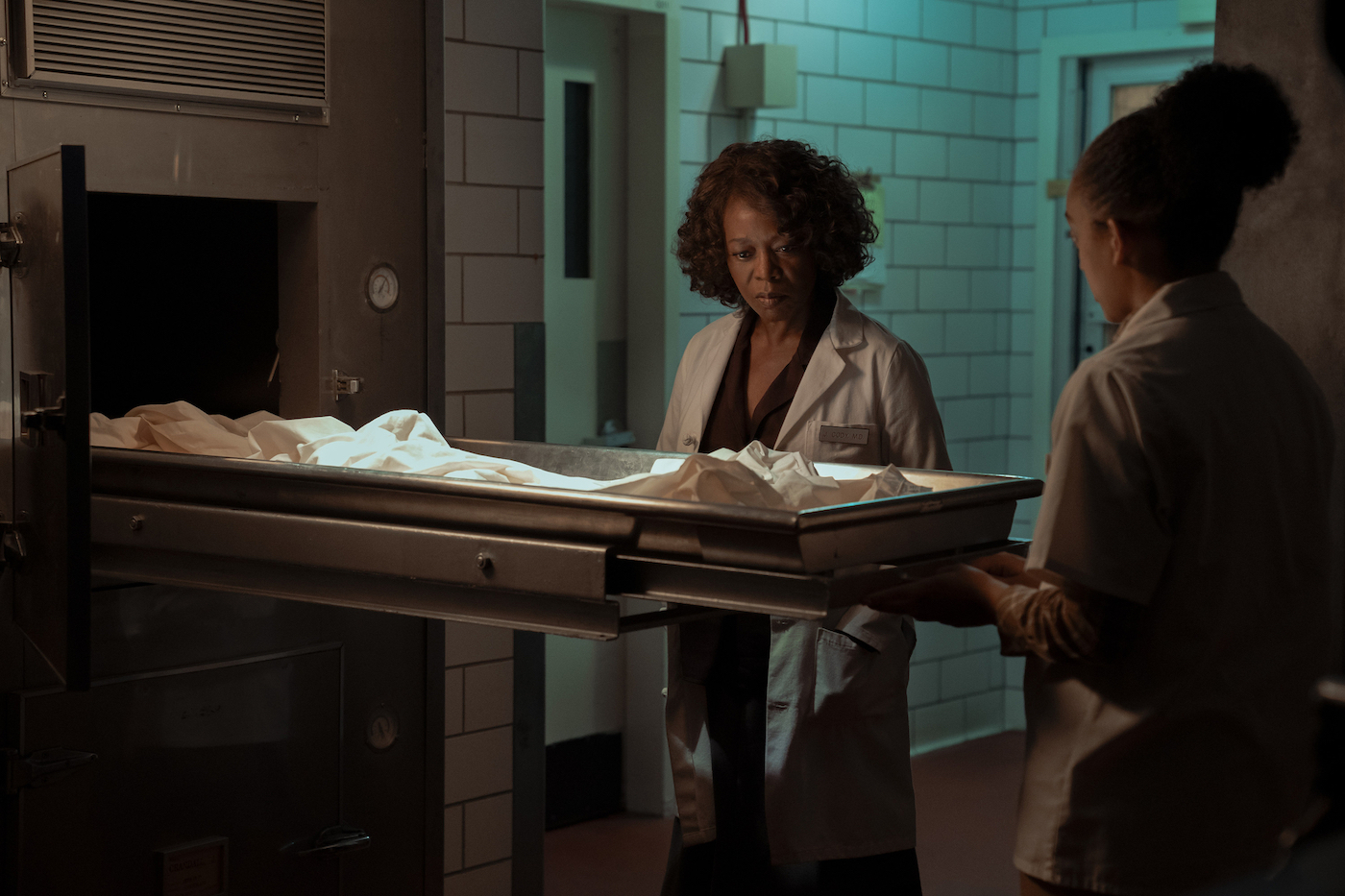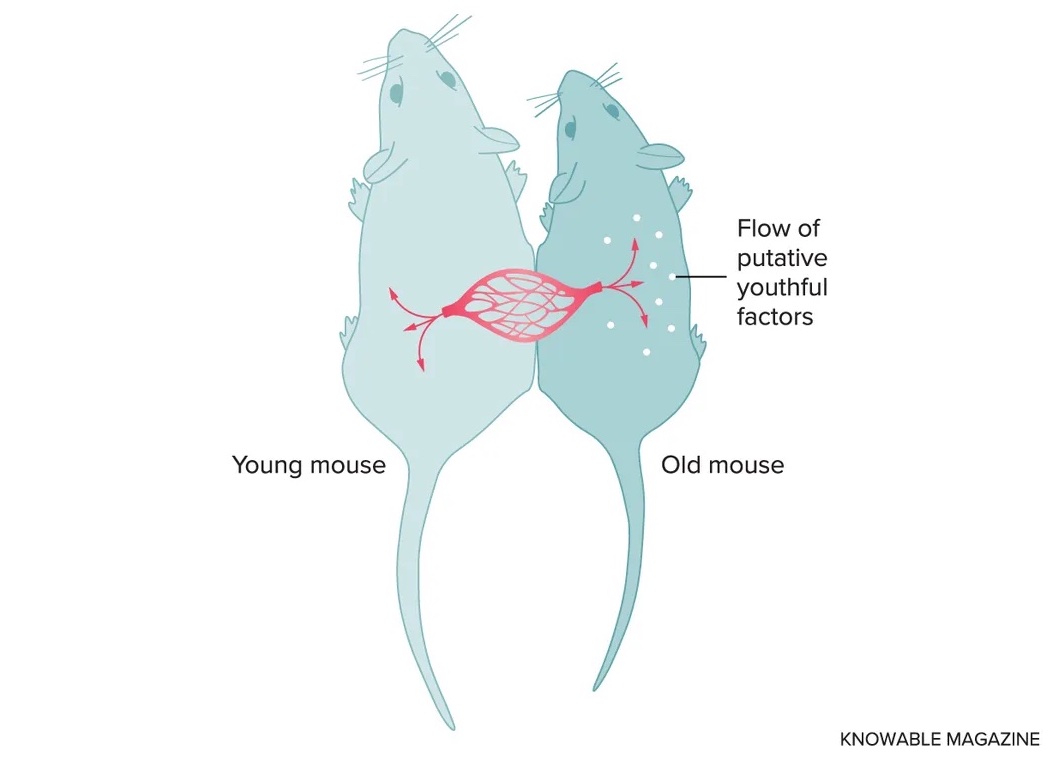‘Salem’s Lot’ And The Bloody Fountain Of Youth
In this Stephen King adaptation, a vampire drinks blood to live forever. Can young blood have anti-aging effects for the living?
This is an article from our newsletter “Science Goes To The Movies.” To get a story about the science of popular movies and TV in your inbox every month, subscribe here.
As they say in the movie: Welcome to the Lot, dillweeds!
“Salem’s Lot,” a new adaptation of the eponymous 1975 Stephen King book, is a spooky vampire thriller rife with all the tropes beloved by King fans—a small New England town, a self-inserted writer character, and lots of undead kids. In it, a mysterious antique store owner moves to town, ensnaring residents in the trap of a bloodthirsty vampire.
In real life, some billionaires and longevity enthusiasts have experimented with a similarly vampiric idea: using blood drawn from the young to rejuvenate their own aging bodies. While there is some research showing that young blood could have anti-aging effects, the procedure isn’t as simple as sucking blood up through a straw, or from a neck. Here’s the eerie truth.

In a spooky procedure called parabiosis, scientists join the circulatory systems of two animals, often mice. Using this technique, Dr. Amy Wagers, a stem cell biologist at Harvard University, has seen for herself how circulating blood from a younger mouse into an older one can improve its liver, heart, and brain function.

In 2013 and 2014, Wagers found an explanation for this phenomenon: a protein called GDF11. It’s a growth factor—a substance that affects the growth of cells—that’s present in blood, and its activity decreases with age in some tissues. For instance, Wagers’ research found that injured older mice can’t regrow muscle fibers as well as young mice, but when given GDF11, they grew muscle fibers back comparably. Older mice also showed more strength and endurance on exercise tests after GDF11 treatment.
Not everyone believes in GDF11 to the extent that Wagers does. Shortly after Wagers’ 2014 research was published, scientists at the Novartis Institutes for Biomedical Research published a paper in the journal Cell Metabolism asserting that not only does GDF11 increase, rather than decrease, with age, it also inhibits skeletal muscle regeneration in some contexts—findings that Wagers and colleagues challenged in another paper published shortly thereafter.
Since the controversy, several papers from outside research groups have shown that lab-derived GDF11 can help treat age-related effects in tissues ranging from skin to the heart, but Wagers is quick to point out that aging is a result of an extremely complex system of factors that work together in sometimes unpredictable ways. While some tissues respond to GDF11 and other growth factors in young blood, others “don’t care at all,” she says.
“There’s even one tissue [the thymus] … that seems to age more quickly if you expose it to, in an old animal, to young blood factors,” Wagers says. “Everything is very heterogeneous.”

As of now, young blood is exclusively for the young and the vampires. There aren’t any FDA-approved anti-aging treatments for humans involving young blood factors like GDF11. And after companies offering infusions of plasma from young blood began cropping up, the FDA issued a statement in 2019 that there is “no proven clinical benefit” to using plasma to combat aging.
But young blood factors could potentially make their way into treatments in the future. A growing body of research from other institutions shows that young blood can rejuvenate certain aging tissues and cells, while a handful of companies are developing research and therapies that leverage GDF11 or other blood factors. (Wagers co-founded one such company, which is now defunct.)
As for straight blood transfers as an anti-aging treatment, like the kind done by vampires and rogue billionaires, Wagers is “not a fan,” adding that they’re impractical, imprecise, and unlikely to be effective because of variation between humans.
Instead of aiming to increase lifespan, Wagers hopes that her work improves healthspan—how long a person stays healthy and maintains physical and mental functions.
“In a way it’s who they are,” Wagers says of people’s health. “And that’s a scary thing, to see that change.”
This movie is a classic Halloween treat, and as a scaredy-cat Stephen King fan, I approve. However, the movie has a distinct lack of substance in a way I found alarming. It staved off my thirst for horror about as much as a rabbit staves off a vampire’s thirst for human blood, but I’m more excited to finish up season two of “Interview with the Vampire” and see Robert Eggers’ new “Nosferatu” in December.
“Salem’s Lot” is streaming on Max.
Emma Lee Gometz is Science Friday’s Digital Producer of Engagement. She’s a writer and illustrator who loves drawing primates and tending to her coping mechanisms like G-d to the garden of Eden.